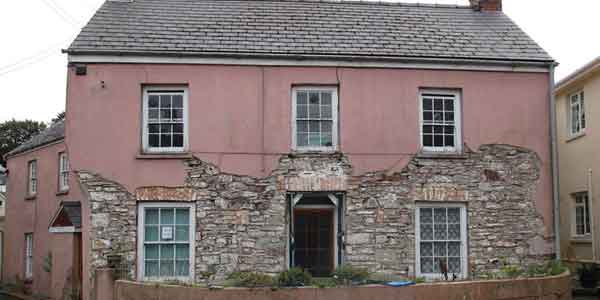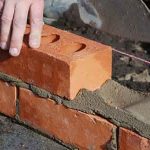Many properties throughout the UK have a render applied to exterior walls. People choose to have their property rendered for several reasons. The most common are the aesthetic it provides. As well as practical reasons, such as weather resistance that render adds to the outside of a property.
It’s possible to use render to improve the durability of your bricks or blocks. This is because the right mix can aid waterproofing and it can also offer fire rating qualities. There are many different types of render available, but what types of external masonry are you able to render over?
Render can be applied to most exterior surfaces, and pretty much any type of brickwork. However, the surface prep will differ depending on the natural key provided by the existing masonry.
Smoother surfaces will require more prep. But this extra work will result in a better surface for your render to bond too.
Does Render Stick to Engineering Brick?

Yes, it is possible to render over engineering bricks and you have several options.
The main problem you will face, is making sure that the render sticks to the brick. As engineering bricks have a relatively smooth finish, there is not much of a key. This means that it makes it difficult for the render to stick.
One option is to install metal lathing which looks like a mesh onto the wall. This will give the render the ability to adhere to the wall more securely. If this is not possible, you can rake out the joints by around 8mm, this will give the render something to hold onto.
You should also prep the surface prior to render using Styrene-Butadiene Rubber (SBR). It is possible to purchase SBR and create a mix as per the instructions on the container. To apply the SBR, you can paint it on using a brush or roller. Alternatively, you could spray it on. Either way will provide a good additional key.
Once the SBR coat becomes tacky, you can then apply the first render coat (the scratch coat). Once applied you will need to scratch lines into the render before you allow it to dry for a couple of days.
With the first coat dry, you can wet the wall and then apply the topcoat as normal. Both the first and topcoat are usually made using a mix of 4 parts sand and 1 part cement. You can also add a plasticiser if you want to make a render that is easier to work with.
Can You Render Over Breeze Blocks?
Breeze blocks are not particularly pretty, so it is common to render over them. Much like engineering bricks, the process is similar, although there are some slight changes to part of the process.
Again, the main thing you should focus on, is creating a key so the render can bond to the blocks. The one thing to think about is whether you are rendering inside or outside. If you use render indoors, then you can prime the walls with PVA. If outdoors, you will need a SBR slurry.
If you want to create a better key, then again, you can rake out the joints to a depth of around 8mm-10mm before you apply the bonding. This will give the render something else to hold on to.
You can apply the PVA or SBR to the breeze block with a roller or brush, and this will create a key for the scratch coat. As this becomes tacky, you can begin to add the scratch coat. Again, this would be a standard mix of 4 parts rendering sand and 1 part cement with a plasticiser. Following this the topcoat can be added.
One other thing you will need to consider is preventing moisture from getting behind the render from the top. This will mean that you need some form of capping or tiling that protrudes the top of your render by around 20mm either side.
Can You Render Over Face Bricks?
Facing bricks usually have a rough surface which means they require less preparation.
Unlike many other bricks and blocks, you won’t need to worry too much about creating a key, but it can help.
You can wet the bricks before applying a coat of SBR using a roller. It is not entirely necessary to wet the bricks beforehand, but this can help to prevent suction, which can weaken the bond.
When the SBR is almost dry, it is then possible to add your scratch coat before waiting for this to dry. Once this is dry you can proceed to apply the topcoat.
Can You Render Over Old Damaged Bricks?
It is possible to render over old, damaged bricks but there is more work involved in the process.
Damage to bricks often comes from exposure to the elements, or in some cases it could come from structural problems.
Prior to applying render, you will need to deal with the damage first.
If the damage is superficial, then any damaged bricks and unlevel surfaces would need to be filled with levelling mortar. This will create a level surface for the render to cover.
Should the brickwork suffer from severe damage, but not structural, then you might need to fit a strengthening metal mesh. This will fit to the brickwork to hold the brick together while it also creates a stable surface for the render.
Once the preparatory work has been completed, it is then possible to follow the same process as the bricks above. This will involve adding a coat of SBR before you apply the scratch coat and the topcoat. Of course, the mix will need to reflect the type of brick or block that you are rendering.
Conclusion
It is possible to render over most types of bricks and blocks. The main thing is to focus on providing a good key, as this will help the render to bond correctly. Without the right key, the render will eventually fail and fall off.
You then must determine the type of brick and mix to create a render that achieves the perfect look and finish.




